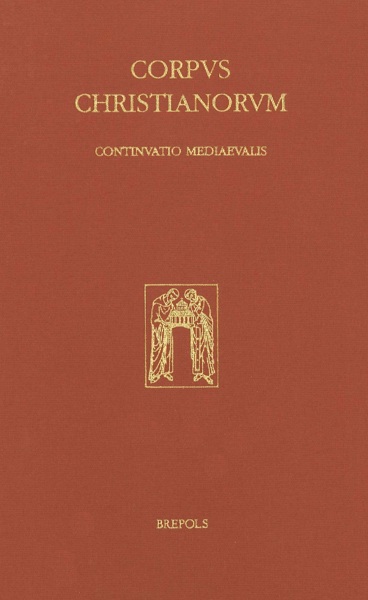
Gerardus Magnus
Opera omnia III
Tractatus de quatuor generibus meditacionum sive contemplacionum - Tractatus de matrimonio
Rijcklof Hofman (ed)
- Pages: xliv + 164 p.
- Size:156 x 234 mm
- Illustrations:2 b/w
- Language(s):Latin, English, Dutch
- Publication Year:2026
- € 190,00 EXCL. VAT RETAIL PRICE
- ISBN: 978-2-503-62075-6
- Hardback
- Forthcoming (Mar/26)
*How to pre-order?
This volume completes the collected works of Geert Grote, containing a treatise on the undesirability of marriage for a secular cleric and a treatise on four subjects suitable for meditation.
Rijcklof Hofman is Research Fellow at the Titus Brandsma Instituut, Radboud University, Nijmegen (The Netherlands) and editor of the Gerardi Magni Opera Omnia, published in Corpus Christianorum, Continuatio Mediaeualis, vol. 172 (2000), 172A (2022); 192 (2003), 235 (2011); 318 + 318A (2025)
This volume completes the collected works of Geert Grote, containing a treatise on the undesirability of marriage for a secular cleric and a treatise on four subjects suitable for meditation.
In his theoretical and philosophical essay Tractatus de quatuor generibus meditacionum sive contemplacionum (a treatise on four classes of subjects suitable for meditation), Geert Grote examines the nature of the subjects that can be used as a support for the meditative process, focusing on the effects produced by the act of meditation on the human mind and its faculties. While he formally addresses four subjects, he effectively discusses two of them only in greater detail, the life and Passion of Christ as recounted in Holy Scripture and the products of the imagination when reflecting on the Passion.
Grote’s Tractatus de matrimonio (a treatise on marriage, subdivided into 22 Chapters) is an essay in which he discusses the undesirability of marriage for a secular cleric, which had been written for a personal friend, but has a much wider applicability. In the first 15 Chapters he adduces theological and philosophical arguments dissuading marriage, while he describes various drawbacks of married life in Ch. 16-22, here drawing on both secular authorities and human experience.





